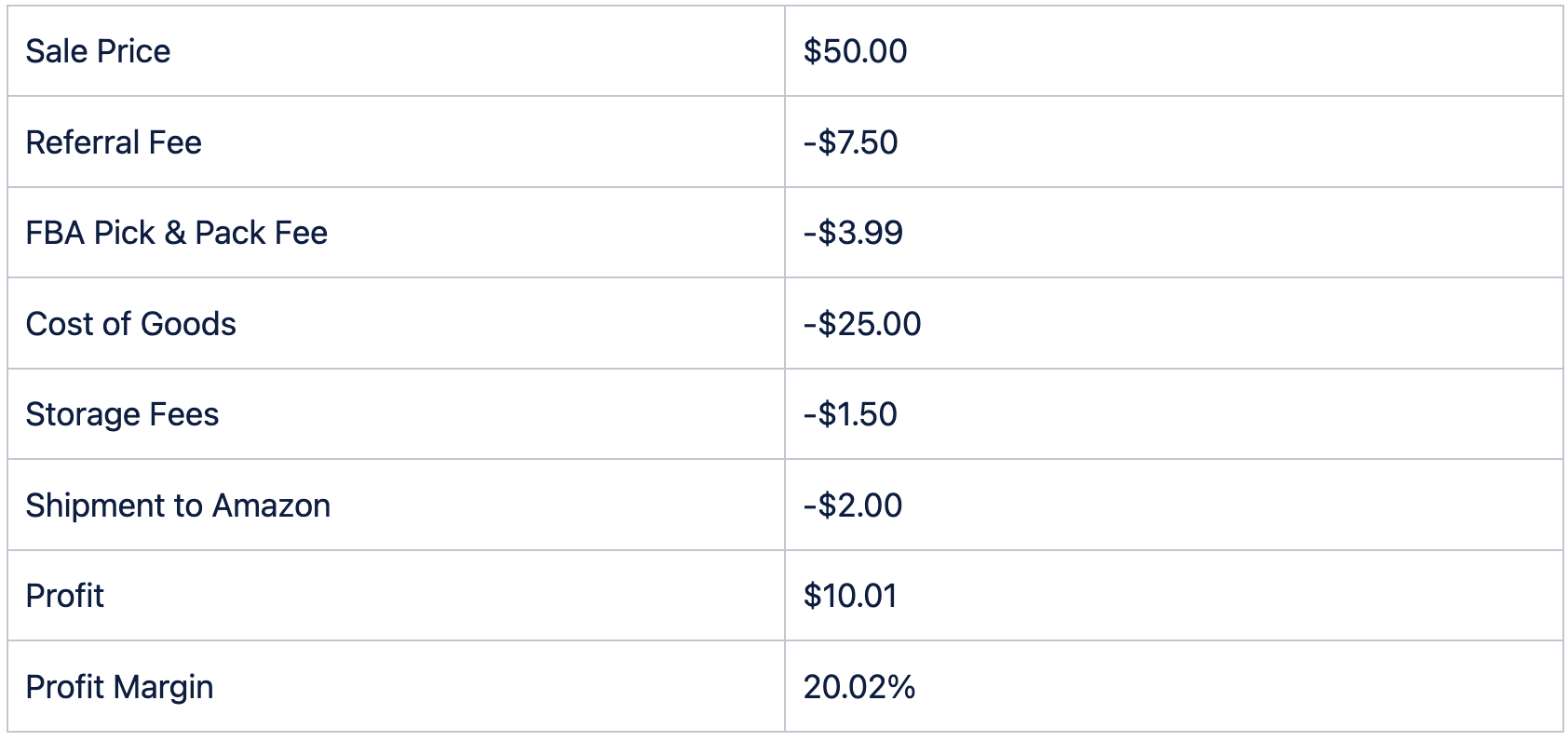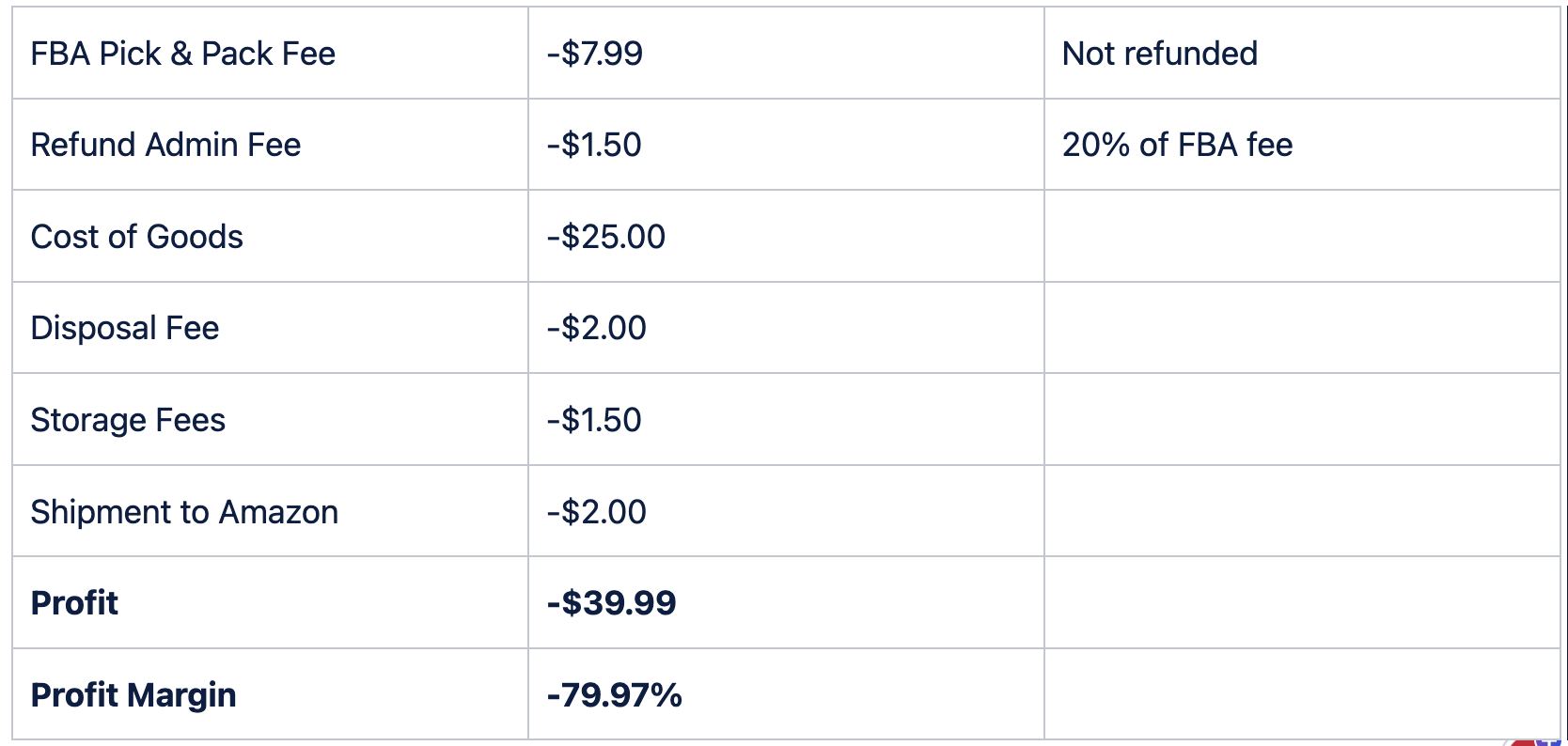Returns are part and parcel of the eCommerce game. You sell online, you know you're gonna get returns - about 20-30% of all sales, give or take. Now, if you're in the auto parts game, the stats are roughly the same. Around 20% of what you sell is gonna boomerang right back to ya. If you're hustling on Amazon's Fulfillment by Amazon (FBA) program, you better have a handle on Amazon's return policy, or you might end up losing more than just a few nuts and bolts.
Typically, here's how it works. You make a sale on Amazon FBA, calculate your profit by knocking off Amazon's fees, the item's cost (or COGS - Cost of Goods Sold), and the storage fees + the cost to ship to Amazon. All good till here. But when a return happens, Amazon refunds the customer in full, and you, the seller, get saddled with the selling and return costs. It's like a double whammy!
Are you fully aware of the financial impact of your returns? Grasping the complete cost of returns is pivotal for your business's fiscal well-being.
Amazon's FBA program has an extensive return policy. They're doing their best to make sure customers are happy and protected. This policy ties up nicely with Amazon's A-to-Z Guarantee, that safeguards products sold by third-party sellers like you. Here are the nuts and bolts of the policy:
Amazon's FBA program provides a comprehensive return policy, aligning with Amazon's A-to-Z Guarantee that supports products sold by third-party vendors on Amazon.
Here's a brief overview:
Getting a solid grip on Amazon's FBA return policy is key to making smart calls about your business's bottom line. Online retail ain't a walk in the park, especially with auto parts. Returns happen. They're not just reversed sales. Each one comes with a price tag that chips away at your hard-earned profits.
Let's talk brass tacks. Say you're selling a car filter on Amazon FBA for 50 bucks. You bought it for $25, and Amazon's FBA fees total to $15.49 ($7.99 for the pick-and-pack fee and $7.50 for the referral fee). Add in the cost of shipping to Amazon ($2.00) and storage fees ($1.50), and you're looking at a profit of $10.01 for every sale you make.

Not bad!
But what if that item is returned?
Well first, let’s say that it’s in “resellable” condition.
You’ll get back 80% of the referral fee, but you’ll have to eat the cost of the FBA fees such as below.

In plain terms, you're down $9.50 and the potential profit you could have made from that item. Plus, you might have to up your storage fees, as the returned item lingers in the warehouse. Even without this, you're in the red by $9.49. To put it in perspective, if you sold 3 of the same product and got one back, you'd only be up $10.53 from an original $150 in sales. It's a tough pill to swallow.
Now here's the real pickle - what if that returned item can't be resold? When it comes to auto parts returns on Amazon, they check each one under a microscope to figure out if it can be resold. There could be a bunch of reasons why a returned auto part gets slapped with an 'unsellable' label - customer damage, not matching Amazon's condition guidelines, or if it comes back looking different than it was sold, like a brand new part that's returned looking used.
Moreover, if auto parts are opened, missing labels, busted, or damaged, they're straightaway labeled unsellable. Any auto parts that could be a safety risk also get this tag. Who's on the hook for the cost when a return can't be resold depends on what caused the damage. If a customer mishandled or misused the part, the seller doesn't get a dime. But if the auto part was damaged during shipping, Amazon will take the hit and you'll get reimbursed.
Now, imagine this - the returned car filter can't be resold because it was damaged by the customer. Maybe your product description was off, or the fitment data was wrong and it got damaged during installation. The same fees come into play - you lose the original profit of $13.51 and you're billed an extra $7.99 FBA fee for the return plus a refund admin fee of -$1.50. But since the item's damaged and can't be sold again, you've also lost the product cost, which is $25. Then, because it's damaged, you've got a decision to make - get it shipped back to you or have it disposed of. If you choose to dump the item, there's a fee for that too.

This scenario? That’s where it starts to hurt.
Keeping tabs on returns, grasping their costs, and pinpointing why items are being returned are all vital to keeping your business in the black and your customers happy. Juggling all these factors, especially when dealing with a ton of SKUs in the auto parts field, might seem tough, but it's absolutely crucial.
A sharp-eyed analysis of return data lets you catch trends and spot trouble before it gets out of hand. For instance, do you notice a high return rate on a particular SKU? This might be a sign of incorrect fitment info or unclear product descriptions, and that's your cue to roll up your sleeves and get to work. The reason for a high return rate might be something as simple as a typo in the model year - an easy fix once you spot it.
Without keeping a keen eye on these issues, they can fly under the radar, causing ongoing customer dissatisfaction, bumping up return costs, and putting a dent in your business' reputation and profitability. This deep-dive analysis not only helps you find hidden costs but also points you towards steps you can take to improve your listings and customer experience.
Understanding the real cost of returns lets you make savvy decisions, fine-tune your operations, and boost your bottom line. In the auto parts industry, where fitment accuracy and detail are king, this understanding could be the key that revs up your business success.
Here are some suggestions to help reduce returns and keep your profitability on track:
Remember, keeping your finger on the pulse of your returns, understanding the reasons behind them, and knowing whether you can still turn a profit despite them is crucial to the health of your business. It's a continuous process that can ultimately lead to increased customer satisfaction, reduced costs, and improved profitability.
Read FREE Tromml's eBook on how AI is changing work in aftermarket parts distribution.